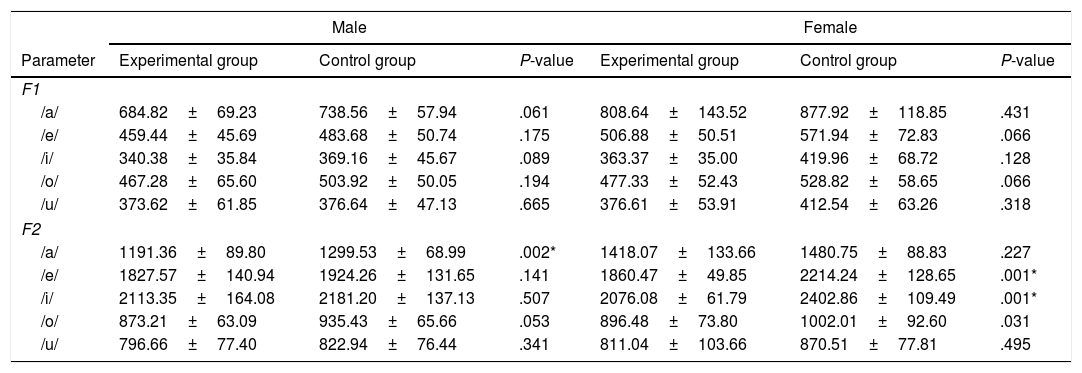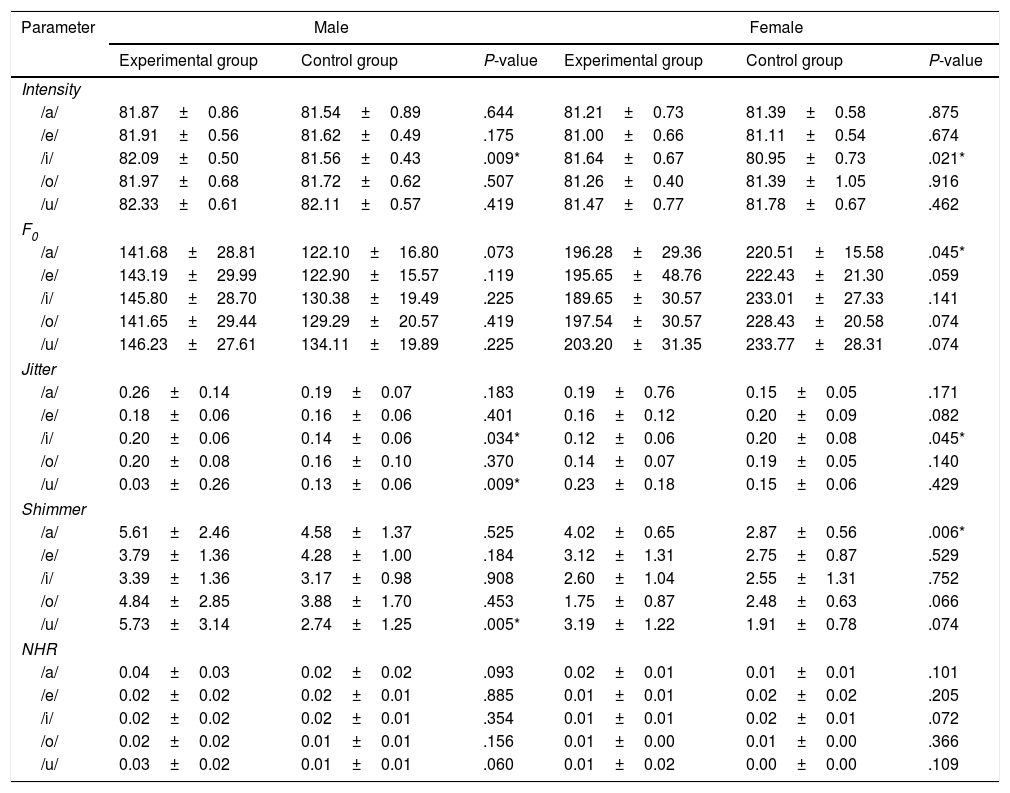Most patients with Parkinson's disease (PD) develop speech disorders during the course of the disease. These disorders severely affect the speech intelligibility and vocal quality of these people. The aim of this paper is to characterize the voice and speech of subjects with PD through the automatic analysis of voice recordings. We also study whether there is a relationship between the acoustic parameters extracted from the recordings and the quality of the voice perceived by the subjects themselves.
Materials and methodsThis is a descriptive correlational study in which 20 subjects with PD and 20 healthy controls were compared. The subjects with PD completed the VHI-30 instrument and performed sustained phonation of different vowels in Spanish. The stage of the disease was also evaluated using the Hoehn and Yahr scale.
ResultsThere are greater vocalic changes in subjects with PD than in healthy controls. In particular, significant differences were found for the vowel space area, intensity, F0, jitter and shimmer. No statistically significant associations were found between these acoustic parameters and the voice quality as perceived by the subjects with PD.
ConclusionsAcoustic analysis of voice and speech may be of great help in characterizing the state of hypokinetic dysarthria in PD patients. In addition, automatic tools of this type could be used in the future in a complementary manner to facilitate identifying treatment needs in PD patients.
La mayoría de pacientes con enfermedad de Parkinson (EP) desarrollan trastornos del habla durante el curso de la misma. Estos trastornos afectan gravemente la inteligibilidad del habla y la calidad vocal de estas personas. El objetivo de este trabajo es caracterizar la voz y el habla de personas con EP mediante el análisis automático de grabaciones de voz. También se estudia si existe la relación entre los parámetros acústicos extraídos de las grabaciones y la calidad de la voz percibida por los propios sujetos.
Materiales y métodosSe trata de un estudio descriptivo correlacional en el que se compararon 20 sujetos con EP y 20 controles sanos. Los sujetos con EP completaron el instrumento VHI-30 y realizaron fonación sostenida de distintas vocales en español. Asimismo, se evaluó el estadio de la enfermedad utilizando la escala de Hoehn y Yahr.
ResultadosHay mayores cambios vocálicos en las personas con EP que en los controles sanos. En particular, se encontraron diferencias significativas para el área del espacio vocálico, la intensidad, F0, el jitter y el shimmer. No se encontraron asociaciones estadísticamente significativas entre esos parámetros y la calidad de voz percibida por el propio sujeto.
ConclusionesEl análisis acústico de la voz y el habla puede ser de gran ayuda para caracterizar el estado de la disartria hipocinética en pacientes con EP. Además, este tipo de herramientas automáticas podrían facilitar la detección de necesidades de tratamiento de los pacientes con EP.
Artículo
Comprando el artículo el PDF del mismo podrá ser descargado
Precio 19,34 €
Comprar ahora













